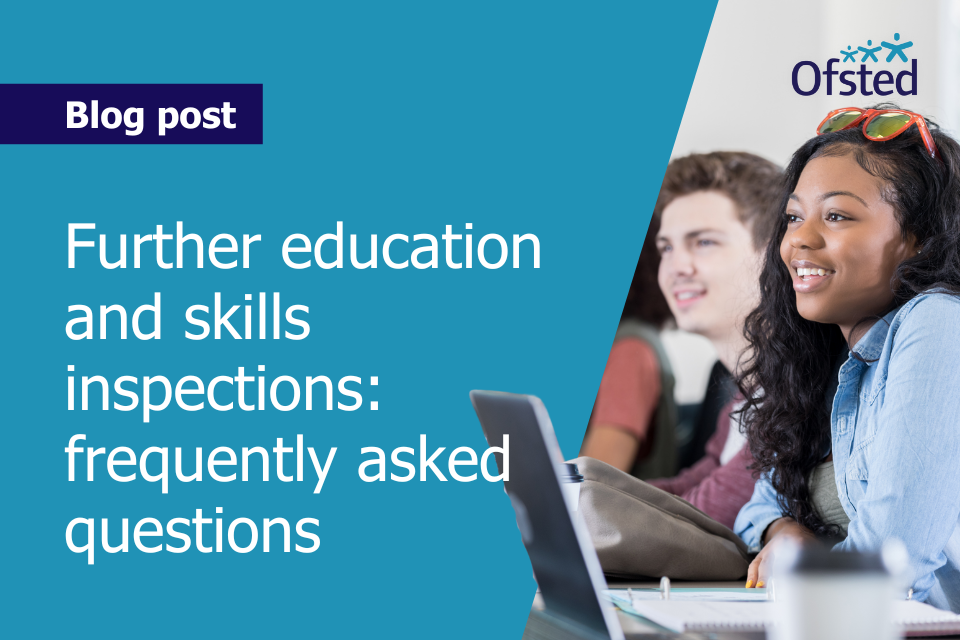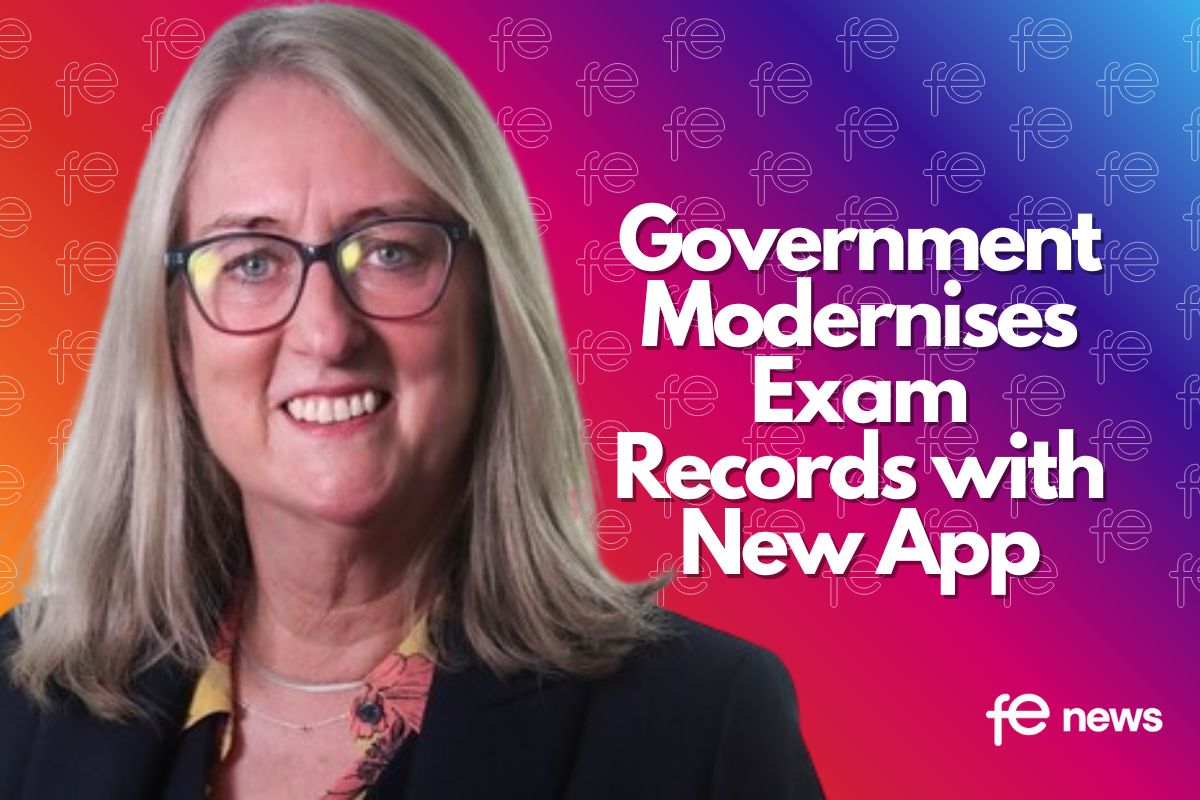Amanda Spielman speech to Association of Colleges annual conference

Amanda Spielman today (14 Nov) addressing the Association of Colleges annual conference,
There could scarcely be a more appropriate moment to be talking to you about further education and skills: a week away from a much anticipated budget, as Brexit negotiations gather pace. The importance of the skills agenda could hardly be clearer. And with that, the need for a strong and effective college sector has never been more pressing. The FE sector has a hugely important role to play in providing the skills that are needed to ensure the success of post- Brexit Britain.
The good news is that there is a great deal to celebrate. In this sector, serving over 2 million students, overall around 7 in 10 colleges are good or better. What’s more, of those good colleges that we inspect through short inspections, the majority remain good.
Thanks to the work of all of you in this room, this means that hundreds of thousands of young people and adults are receiving education and training that is setting them on the path for a fulfilling and productive working life.
Earlier this month, I had the privilege of visiting the Grimsby Institute, one of your number which is showing the way in providing the highest quality education. I met professionals with high ambitions for every single one of their students. It was clear that they have made considerable efforts to create a curriculum at the college which not only reflects the skill gaps locally but is really thinking about regeneration in the area and how to develop skills that can help the region prosper by attracting inward investment. This means that not only do students have access to high-quality training opportunities but that the needs of employers and the economy are being met by the college.
I was very grateful to the principal, Debra Gray, for taking the time to show me round. Although I did learn, from taking a turn on one of their very impressive simulators, that I should never be allowed near a crane!
I was also happy to visit City of Stoke-On-Trent Sixth Form College in the last month, shadowing a short inspection. I don’t think the inspection letter is quite published yet, so I can’t say too much. Hopefully though, it is safe to reveal that one of their strengths is also in the collaboration with others – the local university and employers to name a couple – which helps them ensure the best future for their students.
Of course, as you would expect, not all of the news is good. In the last academic year, as indeed was the case in 2015/16, too many colleges declined from good to requires improvement. Equally disappointingly, too many grade 3 colleges failed to improve quickly enough to become good or outstanding at re-inspection. Taken together, this means that as many as 450,000 students are in colleges where not everybody is getting the level of education and training they deserve. In these colleges, too often we observe senior leaders, including governors, failing to spot the early signs of deterioration of standards or to do enough to rectify them, and teachers who aren’t stretching their students sufficiently.
I would challenge all of these colleges: take inspiration from the Grimsby Institute. Indeed, I believe they have been running sessions at the conference. I would also draw your attention to the success of Fareham College, judged outstanding, with the report published just last week.
Challenge
For colleges that are struggling to deliver the best for their students, I do appreciate that the level of challenge and change in the sector has been a factor.
I recognise that funding levels are considerably lower than any other part of the education system, something which I recently drew to the attention of the education select committee. Indeed, funding for our technical and vocational offer compares badly internationally too. In addition, many of you have had to deal with real term cuts over recent years. This can mean difficult choices about balancing the books. And, as I also pointed out to the select committee, we are seeing a concurrent decline in standards, although we cannot yet definitively say this is as a result of funding constraints.
I am sure, like me, you welcome the recent announcement of additional funding via the strategic college improvement fund, even if the amounts are quite small. And I know that the AoC and other sector bodies have called for an increase in post-16 funding rates; I am sure if that materialises in this month’s budget it will be very welcome news for you all.
So funding is a challenge, but there is also a lot of change.
We’ve had the area review process and a resultant spate of college mergers. Some as a result of recommendations and some not. And we know we have more mergers to come. We have seen the trend towards academisation of sixth form colleges and changes to the A-level curriculum. The apprenticeship reforms are well and truly underway. More on this later.
We have also seen changes to the adult education budget allocations and we are starting to find out what the new T-levels will look like; and when they will be available. Added to all of that is the recent government announcement of a review of higher level technical education.
All of this change brings great opportunity and gives the sector a sense of momentum. But it is important to acknowledge that, in addition, these reform programmes bring a degree of uncertainty about both funding and delivery. They can also make planning for the future difficult.
A force for improvement
So where does Ofsted fit in this picture of change?
When I first addressed an AoC event, back in March this year, I talked of the importance I placed on leading an inspectorate that would be a force for improvement across all of the sectors we reach: including colleges.
Since that time, we have published our corporate strategy. This puts ‘being a force for improvement through intelligent, responsible and focused inspection’ at the very heart of everything we do. These are high aspirations but I wanted to relate them to our work in your sector.
For a start, we will be reviewing the current inspection methodology for apprenticeship training. We want the way we inspect to fit the new world of apprenticeships. Apprenticeships are moving from frameworks to standards. At the same time, with the apprenticeship levy, employers are starting to procure their own apprenticeship training directly. Driven by these changes, we do expect that some providers will adopt different approaches to delivering apprenticeships. We already have some pilot inspections planned to test these new ways of working. These will ensure that our inspection practice stays intelligent and focused on the right things.
While it is early days in terms of understanding the volume of new providers entering the apprenticeship market, I do want to reassure you, our existing and experienced providers, that Ofsted will be monitoring these newcomers closely. I can announce today that I have asked my inspectors, over the coming months, to conduct early monitoring visits to a sample of new providers. This will allow us to evaluate how well prepared these providers are.
With the recent experience of Learndirect fresh in all of our minds,
I have no doubt all of you are acutely aware of the risks faced when large sums of money appear to be washing around the system, with insufficient quality control.
We surely all remember the lessons of the Train to Gain initiative and the problems that were encountered with Individual Learning Accounts. Insufficient oversight and quality assurance undoubtedly resulted in too many poor outcomes for learners, not to mention the scandalous waste of public money. When it comes to the new apprenticeship programme, you can be confident that Ofsted will do all within our power to bring any such practice to light. Because the investment being put into apprenticeships is not something that we can afford to go to waste, particularly in the context of a growing skills gap and the demands of Brexit.
As well as ensuring that our inspections are properly holding the system to account, there are changes we are making to fulfil our own commitment to being responsible.
One of these changes is to the presentation and use of performance data. I realise that the college sector is full of different measures and that, depending on the provision you offer, some are more useful than others. That is why I have asked our data teams to review the way we present our data dashboards for inspectors to use. I want it to be clear to everyone, inspectors and providers alike, which measures are meaningful and significant and which are less significant at an institutional level.
I hope the changes will mean that you do not spend time worrying about or monitoring things that are not important. Value-added data for a group of 3 learners, which has declined from one year to the next, is unlikely to be the focus of an inspection team. Small numbers make the data comparison meaningless and are not something that I want you to spend your precious time monitoring. Our new dashboards will be released soon – I hope you like the new format.
Also, with being focused and responsible in mind, we are reviewing arrangements for our existing ‘support and challenge’ visits to all providers, including colleges, judged as requiring improvement.
We are proposing to standardise our approach across all regions. This will mean conducting a single monitoring visit, normally between 7 and 13 months after the original inspection. We also propose to publish these monitoring visit reports, so that students, employers and the public are aware of the progress providers are making. Our consultation is now live so please take a look and give us your views.
Curriculum/study programme report
As some of you may be aware, a major focus for my first year as Chief Inspector has been the curriculum. I firmly believe that the substance of what students are learning in education matters just as much, if not more than, how good a grade they get in any exam or assessment.
This work we are doing will inform changes to our common inspection framework which we aim to introduce in 2019. This will help us to ensure that inspection is intelligent and providing the most valid measures of the quality of education.
While much of the early focus of the work has been on schools, with a big commentary published last month, we have also been busy looking at the further education curriculum offer.
The first findings from that research will be published in the New Year. I hope you will find them of interest and I wanted to share some of the emerging conclusions with you today.
It is a substantial piece of work. Based on visits to good and outstanding colleges, interviews with employers linked to those colleges and the views of students at those colleges. From these visits, we have been able to put together a picture of what the best level 2 study programmes look like, what they achieve and what needs to be done to improve the overall picture.
These programmes, when taught well, are particularly valuable for school leavers who are unsure, unfocused, or didn’t achieve as well as they hoped at school. Often those who have been left behind by their education to date. In short, for many, these programmes are a bridge between school and work and can be the difference between a fulfilling working life or a dead-end career, or perhaps even no job at all.
So what makes the difference? When do these study programmes succeed for these young people?
One of the principal elements we established will be familiar, I am sure. We found that the best programmes are the ones where local employers are fully engaged. As we saw at the Grimsby Institute, they will have been closely involved at all stages, from working with teachers on the design of courses, through implementation to assessment.
These employers will be in and out of the college, talking to students about what to expect in their chosen industry. They will be offering meaningful work placements that inspire young people in their career and they’ll be providing genuine assessment of students’ skills.
And crucially, they will be working with their local college to make sure that the courses on offer are designed to meet the needs of employers in the area, fill the skills gaps, and help people into meaningful work. After all, there is no point in offering vocational courses that have no reasonable prospect of leading to a vocation!
There are some great examples of this working in practice. Like South and City Birmingham College, where the level 2 study programmes are bringing more young men and women from Asian communities into local jobs in construction. Then there is Harlow College, where joint working with Stansted Airport has led to a training centre on site at the airport providing a steady flow of new employees.
The common feature of all these successful ventures is collaboration. Collaboration in which employers identify the skills they need from their new employees and a college responds by designing a curriculum around those needs. The circle is completed with those employers then ensuring that relevant work placements and on-site training are given to students. Then ideally a job at the end of the course. It really is a win-win situation.
Not only that, as we look ahead to the potential effect of Brexit in terms of skills shortages, colleges and employers working together in this way is absolutely crucial for the future of our economy. We will undoubtedly become even more dependent on home-grown talent in the post-Brexit world. Brexit opens up an unprecedented opportunity for the post-16 sector. But we must get this link between local training and employer need absolutely right. Then our young people will be ready, willing and able to fill the skills gaps that will undoubtedly appear.
Of course, level 2 isn’t just about the job at the end of the study. As I mentioned before, students on these courses are often the young people who have not managed to get the most out of their earlier school years. Often through no fault of their own.
Teachers frequently tell my inspectors that students come to these programmes with a sense of failure from their time at school. They have failed to achieve the GCSEs they need to progress into an academic pathway or onto a level 3 study programme, or have yet to develop a clear view of the job or career they want to pursue. Many have not had any technical or vocational education or learning during their time at school.
Our research, therefore, also looked at the ways in which the best level 2 programmes help these young people fill in the missing pages of their school experience and support them to build their confidence in their abilities.
The best colleges are making sure that young people develop their literacy, numeracy and communication skills in ways that seem relevant and meaningful to their future. These skills are developed both through discrete courses in English and mathematics but also through students’ vocational classes. And this is a nice moment to mention that at the Grimsby Institute, I saw inspiring maths lessons for GCSE resits. I spoke to lots of the students who told me that the teaching they were receiving was far better than the lessons they had had in school and that they were learning much more.
You might see bricklaying students applying their arithmetic skills as they calculate how many bricks they are going to need for a job. All the while knowing that a mistake in their calculations could cost their employer dear. Catering students, skilfully cutting fillets from a fish to minimise waste and calculating the profit their employer can make from the fillets. Or motor vehicle students learning how to write up a job sheet clearly so that their accounts department can calculate an accurate bill for the customer.
On a more fundamental level, the best courses and teachers help students to develop their personal and social skills. The basics that they need to progress, whether to further study or employment. It might sound simple, but, as I’m sure I don’t need to tell you, learning to be punctual and the importance of looking a customer in the eye with a confident smile can be invaluable to a young person’s prospects. In fact, I’m pleased to see the importance of developing young people’s character and resilience being recognised across our education system.
So there is a great deal of excellent work to celebrate. But, and I’m sure you were expecting a ‘but’ at some point, there are also areas of concern.
Our research is showing, in too many instances, an approach that promises unrealistic careers instead of concentrating on the jobs that employers actually need to fill. Meaning in areas such as art and design or sport, students may end up disappointed that their hugely interesting and well-taught course aren’t leading to the jobs and careers they want. Level 2 study programmes must do more than give young people a qualification and develop personal and social skills: valuable as these are.
They must have a clear line of sight to jobs or meaningful further study. As we have seen in other elements of our curriculum research, there is a risk of putting overall achievement rates, and to be frank bums on seats, ahead of both the educational needs of the individual student and their future employment prospects. Colleges must be alive to the fact that the popularity of a course is not the same as the value of that course to students.
One telling piece of evidence here is the alarmingly low progression rates from level 2 study programmes into apprenticeships. In the colleges we visited, less than 10% of students progressed onto an apprenticeship from a level 2 study programme.
Much more needs to be done to encourage these young people to take up apprenticeships. We know it can be done. In one college visited for our survey, nearly one in four students progressed on to apprenticeships from a level 2 programmes – thanks to the commitment of the college leadership and the design of the curriculum.
This is where the apprenticeship reform programme presents real opportunities for you as a sector.
There are gaps to be filled, consortiums to be developed and, in particular, funding and growth to be harnessed. I don’t need to tell you that the university sector has already started to realise the potential. They have started to work with employers to develop higher and degree apprenticeships. It would be a great pity if, for example, all the new levy funding went to universities delivering management apprenticeships rather than in areas of real skill shortage.
Our research has also identified concerns about the quality of information that colleges and the government hold on student destinations. This is a contributory factor when it comes to students pursuing inappropriate courses.
Too often, colleges don’t know whether students are carrying on in education or indeed where they have got a job, let alone a job connected to the skills learned on their course. How can a young person, or indeed their parents, be expected to understand therefore, the value of taking certain level 2 study programmes?
This failure on a local level is compounded by the lack of up-to-date national data on the value of study programmes to the overall economy. All of which adds to a sense of ‘second best’ for these vocational programmes.
That is simply neither fair, nor justified, when it comes to the efforts all of you put in to helping these young people build their futures.
So please keep an eye out for the research when it is published. I very much hope that it will help inform the ongoing FE reform programme. And I hope these reforms, along with continued political focus, and hopefully some extra funding in due course, will ensure that FE has a bright future, in all of its guises.
After all, FE is the vital backbone of so much of our education. From the A-level teachers aiming to get their most academic students to Oxbridge, through the community learning teams helping adults to improve their basic skills and the many technical and vocational departments working to create a skilled workforce to their local employers and the economy.
I do get frustrated sometimes with the ease to which commentators on education can focus on the doom and gloom, particularly when making international comparisons. But let’s not forget that, in the latest PISA report, we are in the top half when it comes to equality in education and the top half when it comes outcomes. We may not be the best in the world, yet, but the education we provide is right up there.
Conclusion
Preparing for my session today I was struck by a comment on your conference website. A delegate from last year lamenting: ‘For too long, the FE sector has been viewed as second best and the poor relation in the education sector’. Luckily, after attending the conference the same delegate was much cheered by the positivity of his fellows. Concluding that it: ‘portrayed a new sense of confidence and optimism that I haven’t experienced in a long while. If you could bottle this positivity and take it back to each college in the land, the future for colleges has a bright outlook’.
I hope that after today and tomorrow’s proceedings you will all be even further inspired. Now, more than ever the work of colleges is vital to the success of the country. I commend all of you for the efforts you put in to making every young person’s life a success.
Amanda Spielman, OFSTED Chief Inspector
Despite best endeavours to ensure accuracy, text may contain errors which could alter the intended meaning of any portion of the reported content. Speakers have not had the opportunity for any corrections.











Responses